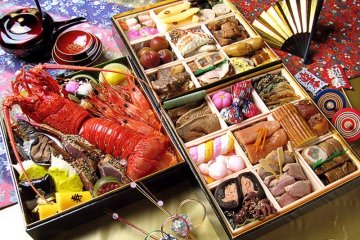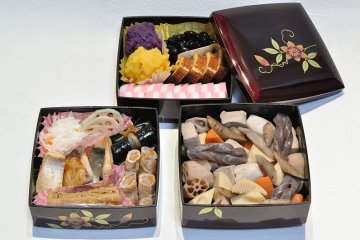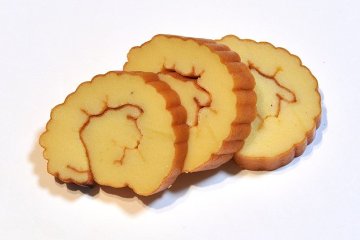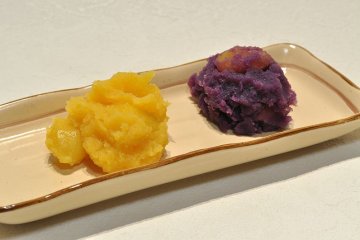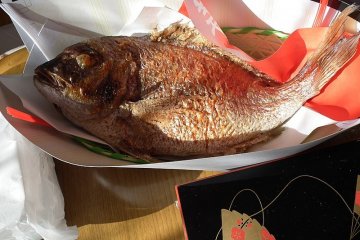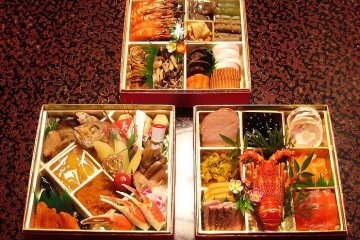It’s not an understatement to say that O-Shogatsu or New Year’s is one of the biggest and perhaps most important events of the year in Japan. From watching the first sunrise of the new year to sharing details of your first dream and searching for deeper meanings, there is a lot to do on the annual holiday. So, it’s no surprise that food plays a big role in the celebration and festivities as well.
From around the country, you’ll discover assorted o-sechi (Japanese New Year foods), each with its own meaning or symbolism for the year ahead! Whether you order your o-sechi or cook it yourself, you're in for a custom dating back hundreds of years.

History
The tradition of o-sechi began during the Heian period (794–1185) and referred to one of the five seasonal festivals in the Kyoto Imperial Court. As it was taboo to cook anything during the first three days of the new year, the original o-sechi meals were most often boiled vegetables (nimono) lightly preserved with soy sauce, mirin, and sugar.

These days, however, o-sechi has expanded to include all styles of food imaginable. Seiyo o-sechi refers to Westernized o-sechi, and chousen no o-sechi is Korean-style o-sechi. Even toshi-koshi soba (year-crossing soba)—a simple buckwheat-noodle dish—and o-zoni—a soup stock with mochi—are considered o-sechi dishes nowadays.
O-sechi
Traditional o-sechi is often served in a multi-tiered box or jubako. For many families, it has become a tray-like dish with individual compartments for each o-sechi dish.
Rather than covering every o-sechi dish and the regional variants, let’s take a look at some of the classic o-sechi foods (there are many more than those listed below):
- Daidai (橙/ だいだい): When written with a different kanji (代々), daidai means “from generation to generation.” These Japanese bitter oranges symbolize a wish for children.
- Datemaki (伊達巻 / だてまき): Symbolizing a wish for auspicious days, these sweet, rolled omelets are mixed with fish paste or mashed shrimp.

- Kamaboko (蒲鉾/ かまぼこ): Traditionally, slices of red and white kamaboko (broiled fish cakes) were arranged in patterns to represent the rising sun as a celebratory symbol.

- Kazu no ko (数の子/ かずのこ): A block of herring roe; kazu means "number" and ko means "child." Perfect for any couple wishing for many children.
- Konbu (昆布/ こんぶ): This kind of thick seaweed is a play on the word yorokobu, meaning "joy."
- Kuri kinton (栗金団/ くりきんとん): These candied chestnuts and sweet potato represent financial prosperity for the year ahead.

- Kuro-mame (黒豆/ くろまめ): Mame also means "health" and these black beans symbolize a wish for health in the New Year.
- Kohaku-namasu (紅白なます/ こはくなます): This red-and-white vegetable kuai (a Chinese dish consisting of finely-cut strips of raw fish or meat) is made of daikon radish and carrot pickled in sugared-vinegar and flavored with yuzu citrus.
- Tai (鯛/ たい): The popular red sea-bream is a play on the Japanese word medetai, which symbolizes an auspicious event.

- Tazukuri (田作り/ たづくり): A dish of dried sardines cooked in soy sauce that symbolizes the wish for an abundant harvest. The meaning of the kanji is "rice paddy maker," as sardines were once used to fertilize fields.
- Ebi (海老/ えび): Symbolizing a wish for long life—as demonstrated by the prawn’s long whiskers and bent back—this is a popular and common hit among o-sechi dishes.
- Nishiki tamago (錦卵/にしきたまご): This egg dish is separated before cooking with yellow symbolizing gold and white symbolizing silver. Together this dish symbolizes wealth.
Arrangement
Just as important as the food—culturally speaking—is the jubako it comes served in. Historically, these lacquer boxes were black on the outside and vermilion inside. The boxes were stacked as a metaphor for building up joy for the new year. O-sechi scholars argue over whether three or four stacks is the perfect number for the jubako with many arguing that four represents good fortune for each of the four seasons, while others argue that four is unlucky and the number three represents perfection.
Inside the box, it’s all about numbers and arrangement, too!
Dishes should be arranged by how they were cooked (e.g., boiled foods, grilled foods, etc.). It’s equally important that they be aesthetically pleasing; many jubako layouts are organized in squares or diamonds—and gaps between dishes are not allowed.

However you decide to enjoy your o-sechi, whether it’s a traditional jubako or just a delivery pizza with happy wishes for the new year, you’re carrying on a long tradition of fortune to come.







